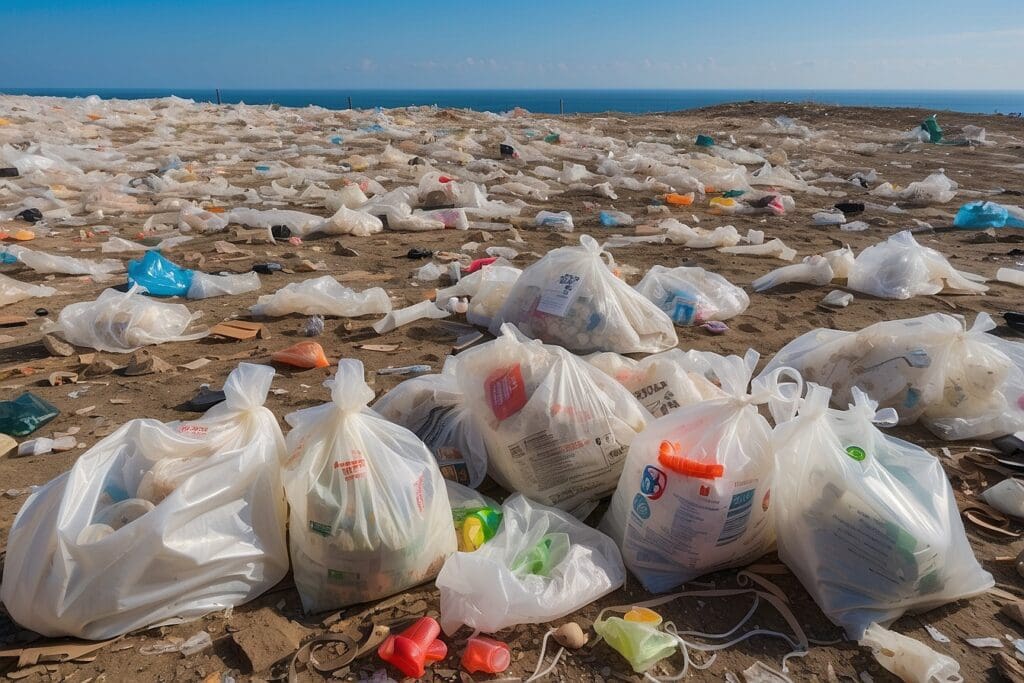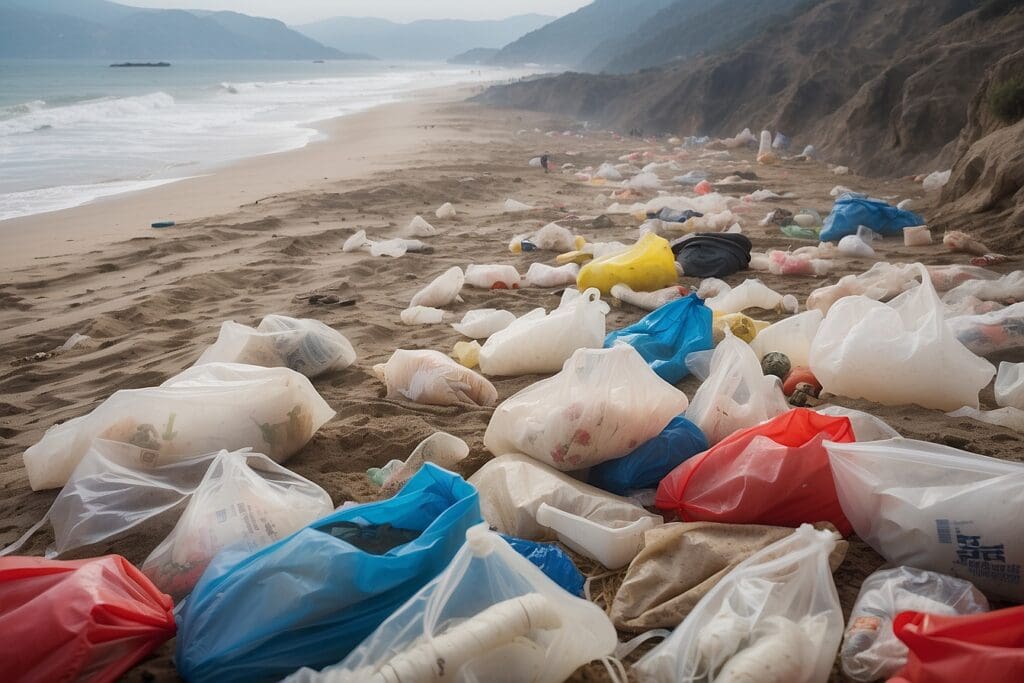With each purchase you make, whether it is at a drug store, retail store, or grocery store, you most likely leave with a plastic bag to carry your purchases home. When you get home, where does it go? Sometimes you reuse it as a trash bag, but most of the time, these plastic bags made just for our convenience end up in our landfills, flying in the air, or floating in our waters. These bags are extremely durable and take up to 100 years to degrade. Even when a plastic bag does degrade, it becomes “plastic sand,” which can be ingested by animals to injure or kill them.1 Even if one tries to recycle plastic bags, many recycling centers do not accept them because they often get caught in the machines if they don’t just fly away from the collection site before making it inside. This increases litter on the streets and also allows the plastic to fly into the ocean, creating a huge problem that has accumulated into something that doesn’t seem to be fixable – the Giant Pacific Garbage Patch . This giant mass of trash twice the size of Texas is 90% plastic and does not seem to shrink or budge with any of the efforts carried out by scientists and environmentalists alike.2 Many marine animals die from consuming the waste. Furthermore, this waste collection cuts off the light supply to the photosynthetic organisms that lay beneath the water level.
A boat in the middle of the Great Pacific Garbage Patch.3
A Solution?

The best way to solve a problem that isn’t going away is to at least not make it bigger. By continuing to use non-biodegradable and easily airborne objects, i.e. plastic bags, as a daily convenience, we are adding fuel to the fire. Plastic bags can easily be removed from society by replacing them with natural gas 8. There are movements that are viewed as less extreme than all-out plastic bag bans, such as initiatives that promote recycling plastic bags or manufacturing biodegradable plastic bag alternatives. However, these options are also wrought with controversy. For one, recycling plastic bags does not prevent them from flying with the wind during any part of the process because they are not easily contained. But more importantly, there are very few plants that are willing to provide plastic bag recycling because the process of recycling them may cost more than manufacturing new plastic bags.9 The other side of this debate is the plastic industry itself. There certainly are groups that support the American Chemistry Council (ACC) and plastic manufacturers and believe that many peoples’ jobs rely on the viability of the plastic industry. The ACC has a budget of $100 million10 and in the year 2011 alone spent over $10 million in lobbying expenses.11 These lobbying expenses were for the ACC as a whole, which represents a variety of products and technologies,12 thus this $10M was not all necessarily related to the plastics industry, but it is clear that the plastics industry is making sure its interests are heard on Capitol Hill.
What Can You Do?
What if your area doesn’t have a plastic bag ban? How can you help this movement? As an intern in CalPIRG, I worked to successfully pass the ban in Alameda County in January of this year. Here are the steps that CalPIRG and other Bag Ban supporters took to ensure that the StopWaste committee passed the Plastic Bag Ban ordinance in our area:
- Start a group. A fight is better fought with other passionate people to support a valiant cause. Start planning as a group and allocate jobs/tasks amongst one another. When the group becomes well organized and focused, make sure that the ban has been proposed by a member of your local government.
- Publicize. It is important to garner support from the local community in order for the city council/your local waste management authority to support the ban. For publicity, CalPIRG at UC Berkeley collected over 4000 petitions on campus in support of the plastic bag ban and held a press conference with over 6 media hits.13
- Speak up. There are weekly meetings at our city council and waste management authority—StopWaste—and as a group we attended the meetings where the public was welcome to make a statement.14
- Follow the schedule. During the weeks leading up to voting on the ban, bring a large group of people with the same vision to make personal statements about the ban. Remember that there will also be people in favor of alternatives or people that are sympathetic to the plastics industry, but with the facts in support of the detrimental effects of plastic on our environment and wildlife, it shouldn’t be hard to refute any argument they make. For more on plastic bags, check out this article: Plastic Bag Facts .
- Follow up. If there is an option for cities to opt out of the ban, talk to the representatives of these cities and see how one could sway them into not opting out.
Plastic bag bans will not spread on their own. They need to be carried and supported by people passionate about the environment. Although it will be a long process, the end result will be well worth it. People will learn to be more responsible and bring reusable bags instead of relying of the convenience of having a brand new bag provided with each purchase. But nothing can happen without action! So let’s make this movement spread across our nation to help the planet little by little. The good news is that the U.S. is not at the forefront of the plastic bag ban, there are many countries and municipalities around the world that have these bans as well.15 But wouldn’t it be amazing if the U.S. could be a leader in this realm and be a full-fledged plastic bag-free Nation!





